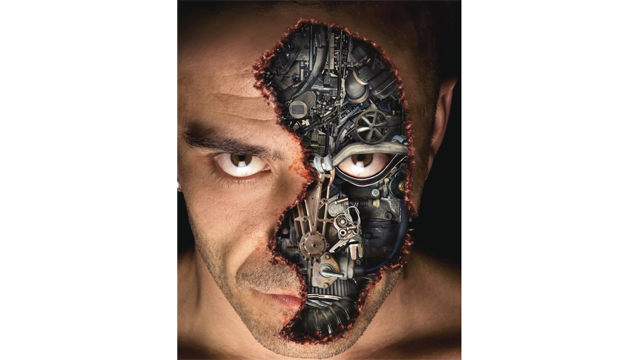
I tried, like so many others, to buy tickets for the 2012 Olympics using the ticketing system that gives longer odds than the National Lottery. I don’t actually know anybody that was successful in buying tickets for any of the events. In fact the only the people I do know that are actually going are, technically, ‘staff’. One is performing in the opening ceremony and the other is the security bloke. My inbox has been flooded with emails from ‘London 2012 Tickets’ ever since, which I delete immediately since I am still irritated that out of the 23 events I declared interest in, I didn’t get any. Most were for the more obscure events that I thought would have had lower subscriptions, and therefore more probable to get a ticket. Like for, say, Handball.
It wasn’t until the recent MIA Summer Reception hosted by the House of Lords, that I took more of an interest in the Paralympics. There I met Tony Harris, who is the co-driver, and founding member, for the Race-2-Recovery team, racing in the Dakar Rally. This is a phenomenally inspiring project made up largely by service personnel, who have overcome the worst kind of injuries, to compete in the toughest rally. In his own words he describes his injury as a ‘mere scratch’, having lost his left leg below the knee when blown up by an IED in Afghanistan.
We talked about the conditions they would be racing in and the unusual spares list that their support teams have to take, like spare body parts. The technology in prosthetic limbs is now so advanced that his team can compete alongside able-bodied teams, which is the point Tony wants to make. He doesn’t want to be labeled as disabled, because he is not. He is perfectly able, and to prove it he and his team mates, with their spare body parts, will race 8,000km from Lima to Santiago through the harshest of environments and human challenges in a 275 bhp 4.0L Land Rover V8 Wildcat.
Many of these technological advances can be seen during the Paralympics. If you have a keen interest in technology, then you may be better off watching these ‘Parallel Olympics’, since many of the athletes will be competing using modern technology to overcome similar challenges. Just take a look at Oscar Pistorius, the ‘Blade Runner’, using the much debated Flex-Foot Cheetah, a Running- Specific Prostheses (RSP) which is designed to emulate the elastic function of tendons. He holds the world record for the 100 m with a time of 10.91s.
These Olympians are even more inspiring if you consider the events as technology demonstrators, and by contrast (and with some imagination), Bloodhound would be beaten from a standing start over a 100 m sprint by Oscar. By the time he’d crossed the finish line, our car will have only moved about 16 m, however I should point out that the conversion rate from potential to kinetic energy is somewhat slower than a coiled spring. If on the other hand we were allowed to start in full compressed ‘coiled spring’ mode, Andy would hit 60 mph in less than a second, and 100m would be gone in under 0.25s.
Maybe there is good reason to limit the use of technology in athletic events; however I’d like to see the opposite. Use the Paralympics to really push technology and help transfer to real world healthcare faster. I don’t mean higher performing running shoes like the Royal College of Art presented recently using 3D Printing, that’s just a ridiculous waste of public R&D funding as it will be banned like the shark-skin swim suit in the Olympics, and useless in the Paralympics for athletes using RSPs.
Not to mention the shoe itself, it won’t work anyway from today’s 3D Printer materials and processes. That’s why we only see 3D Printed shoes as fashion accessories. As a functional high performing shoe, it’s an ambition maybe, but not even a practical solution for a problem that doesn’t exist. I’d suggest the Arts Council, Medical Research Council and the EPSRC create a joint fund to bring some proper engineering and material science to creating better prosthetics instead. And while they are at it, maybe fund the elusive mobile parts hospital for ‘growing’ spare limbs in the field, and then fund the Race-2-Recovery team to demonstrate it during the Dakar Rally. Make it a responsibility of the IAAF to encourage the use of technology.
I for one do want to spend $6 m and see Steve Austin compete, and if it comes to it I’d even bring back the Tug-of-War event and enter the entire Bloodhound team along with the car. At 135,000 hp it will take 270,000 Olympians, and a Steve Austin, to beat it. If Bloodhound is inspiring the next generation of Scientists and Engineers, then Tony and Oscar are inspiring today’s generation by not just overcoming severe injuries, but then competing and showing us all what being human really is.
My disappointment at not getting tickets for the Olympics was short lived after meeting Tony, and if I’m honest, I am not really that interested in athletics. I just wanted to go since it’s here in Britain, and that should be an experience available to us who live here, in Britain. If Paris had won the bid to host the games, I know for a fact that the entire Athlétique Equipe Français would have gone on strike the minute they sensed that tickets weren’t readily available for their fellow countrymen. Just saying.


